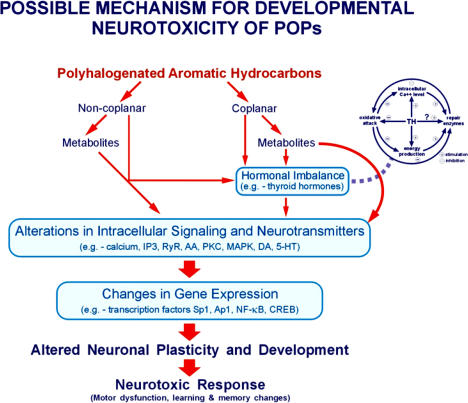FIGURE 3.
Possible mechanism(s) for developmental neurotoxicity of persistent organic pollutants (e.g., PCBs). The polyhalogenated aromatic hydrocarbons (PAHs) can be separated as non-coplanar and coplanar compounds. Non-coplanar parent compounds and hydroxy metabolites affected intracellular signalling, thyroid hormone (TH) homeostasis, and neurotransmitters. On the other hand, coplanar parent compounds have effects only on TH while no effects on neurotransmitters and intracellular signaling. The coplanar metabolites have been shown to affect intracellular signaling and TH. In the case of non-coplanar PAHs, all three proposed mechanisms might be working together to cause neurotoxic response while coplanar PAHs could be working through one or two of the proposed mechanisms to cause neurotoxic response. The changes in these proposed pathways could lead to changes in the gene expression of several transcription factors that may lead to altered neuronal plasticity and development, and finally lead to a neurotoxic response such as motor dysfunction or learning and memory deficits.

